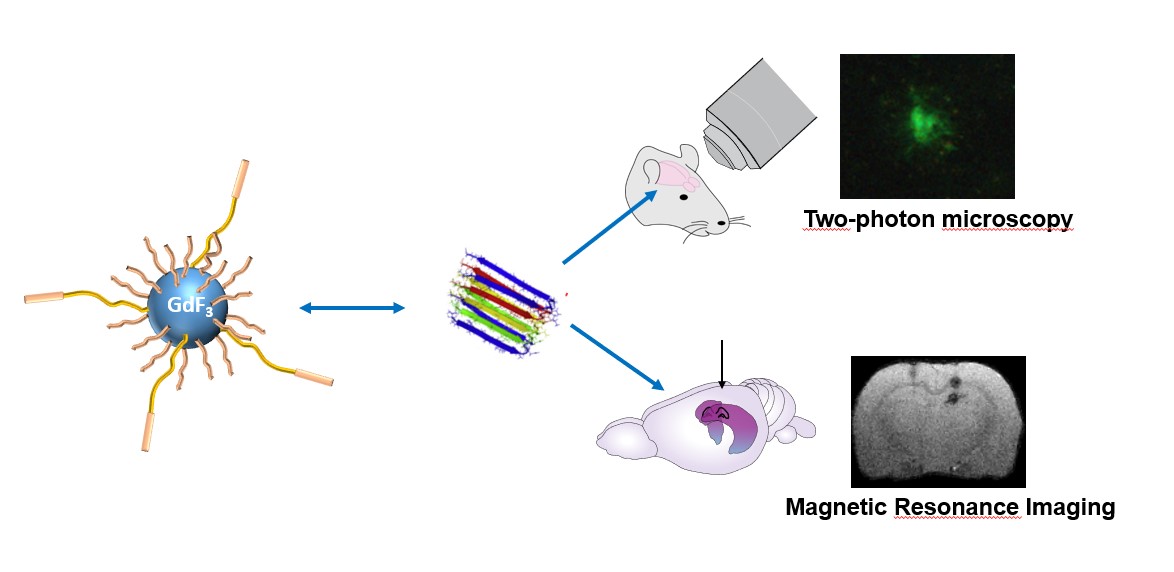Publication of the Chemistry Laboratory in the journal Nanomedicine on March 17, 2023. Communication of the CNRS-INC on March 20, 2023.
A consortium of European researchers led by two Lyon laboratories - the Chemistry Laboratory (CNRS/ENS de Lyon/Université Claude Bernard Lyon 1) and the Lyon Neuroscience Research Center ( CNRS/Claude Bernard Lyon 1 university/Jean Monnet University/Inserm) - is proposing a new "multi-technique" imaging agent (MRI, X-ray, fluorescence...) targeting amyloid-β (Aβ) plaques, the first pathological signs of Alzheimer's disease. These results are published in the journal Nanomedicine.
Summary
The design and study of a new contrast agent targeting amyloid-β (Aβ) plaques in Alzheimer’s disease (AD) is proposed. Aβ plaques are the earliest pathological sign of AD, silently appearing in the brain decades before the symptoms of the disease are manifested. While current detection of Aβ plaques is based on nuclear medicine (a technique using a radioactive agent), a different kind of contrast agent is here evaluated in animal models of AD. The contrast agent consists of a nanoparticle made of gadolinium and fluorine ions (core), and decorated with a molecule previously shown to bind to Aβ plaques (grafting). The core is detectable with MRI and x-ray imaging, while the grafting molecule is detectable with fluorescence imaging, thus allowing different imaging methods to be combined to study the pathology. In this work, the structure, stability and properties of the contrast agent have been verified in vitro (in tubes and on brain sections). Then the ability of the contrast agent to bind to Aβ plaques and provide a detectable signal in MRI, x-ray or fluorescence imaging has been demonstrated in vivo (in rodent models of AD). This interdisciplinary research establishes the proof of concept that this new class of versatile agent contrast can be used to target pathological processes in the brain.

Reference: In vivo targeting and multimodal imaging of cerebral amyloid-β aggregates using hybrid GdF3 nanoparticles. Frédéric Lerouge, Elodie Ong, Hugo Rositi, Francis MPambani, Lise-Prune Berner, Radu Bolbos, Cécile Olivier, Françoise Peyrin, Vinu Apputukan, Cyrille Monnereau, Chantal Andraud, Frederic Chaput, Yves Berthezène, Bettina Braun, Mathias Jucker, Andreas K.O. Åslund, Sofie Nyström, Per Hammarström, K. Peter R. Nilsson, Mikael Lindgren, Marlène Wiart, Fabien Chauveau and Stephane Parola. Nanomedicine, March 17, 2023.
DOI : 10.2217/nnm-2022-0252






